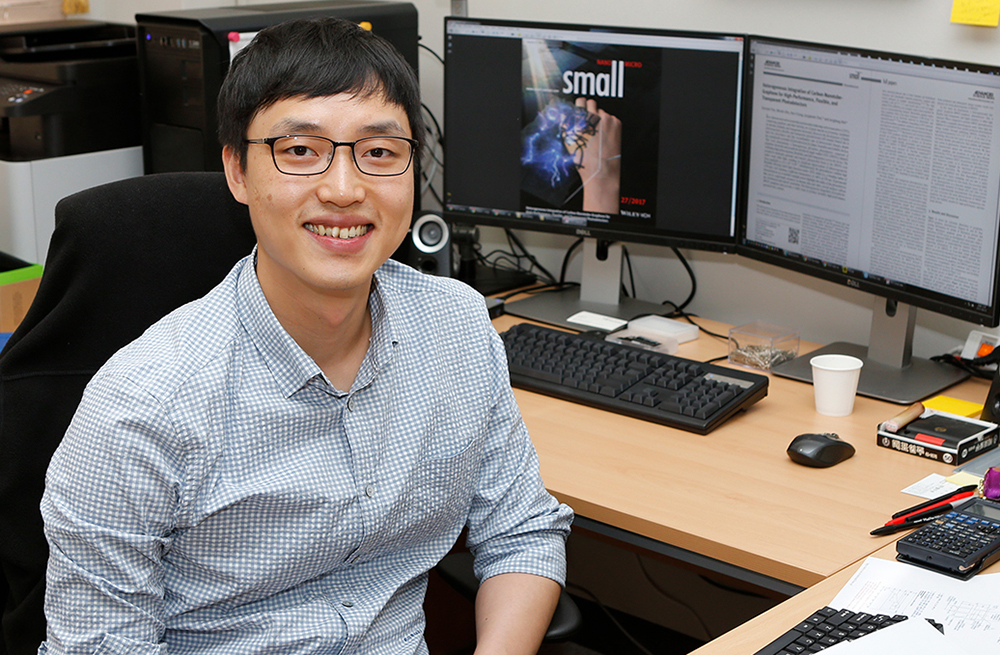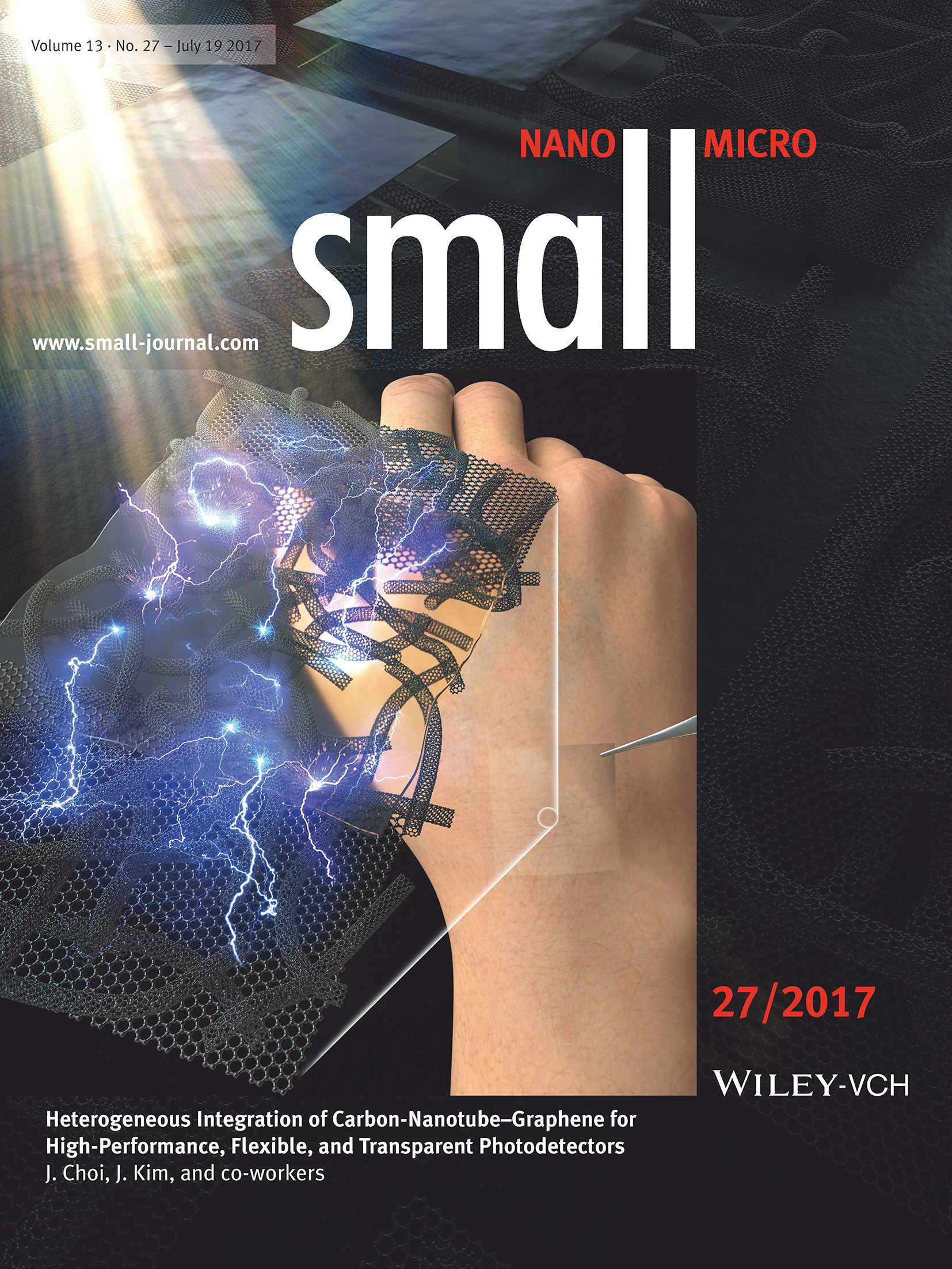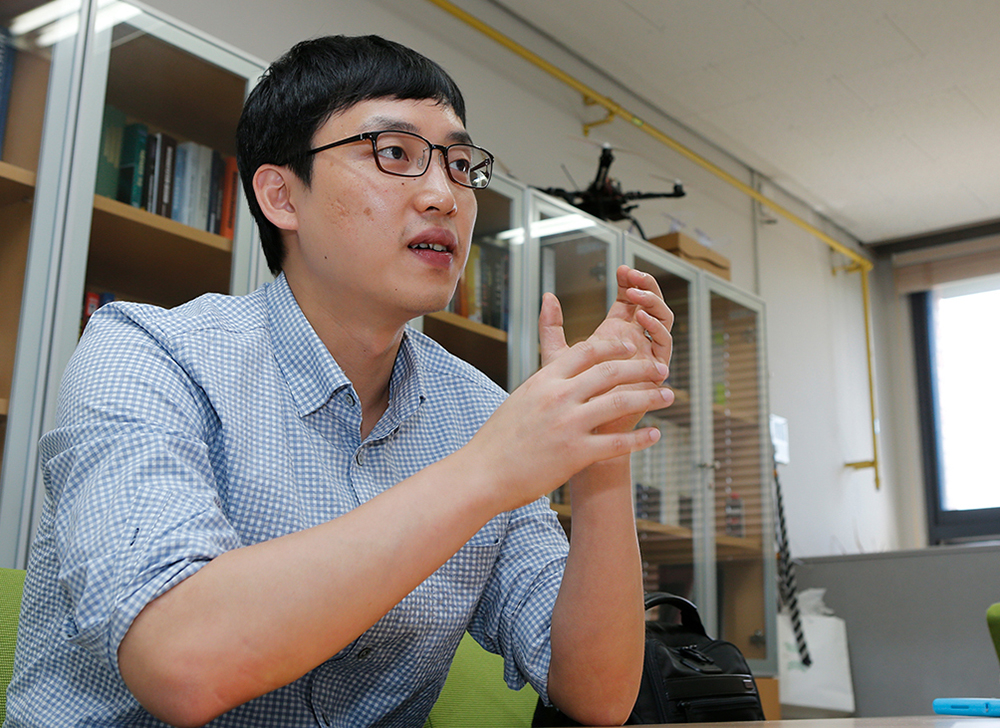Professor Choi Jung-wook (Mechanical Engineering) Develops New High Performance Optical Sensor Technology N
No.88985- Writer pr
- Date : 2017.08.09 11:14
- Views : 8257
Developed 'high performance flexible/transparent patch-type optical sensor' using carbon nano-materials and organic matter
Published as cover paper for the latest issue of 'Small', a global academic journal in the nano-material sector
Expected to be used as an 'advanced electronic device for the health and cosmetic sector' that can be attached to the human body
[August 7, 2017]

YU School of Mechanical Engineering Professor Choi Jung-wook (33, photo) is receiving attention from the academic circles for developing a high performance patch-type optical sensor.
Optical sensors are elements that convert light into electric signals. It is used for measuring physical quantity such as the wavelengths and intensity of light, but also in a variety of other fields such as information processing, optical communication, and the medical field. There has recently been many studies being conducted to develop flexible optical sensors with the development of flexible electronic devices. However, electrodes, which are major elements that comprise sensors, are comprised of opaque or easily broken materials such as metals or indium oxides and therefore have limitations in being used for actual flexible sensors.
The research team used carbon nano-materials and organic materials that react sensitively to light to develop patch-type optical sensors with excellent flexibility, elasticity and transparency. The results of this study, which was carried out as a joint research with the Yonsei University Professor Kim Jong-baek's team was published as the cover paper (see cover below) of the latest issue (Jul 19, 2017) of the world-acclaimed academic journal <Small> (impact factor (IF) 8.643).

Professor Choi said, "As a substance in charge of photosynthesis for plants and 'carbon nano-materials', which is a new material that has recently received huge attention, this is the first case to develop highly sensitive optical sensors that are transparent and elastic by creating an integrated structure of porphyrin that generates electric signals by reacting to light."

The research team created a transparent and elastic optical sensor that uses graphene as the electrodes in carbon nanotube channels that can act as semiconductors. Carbon nanotubes and graphene are substances made up only of carbon. In addition to the very small size at nano-meter units and its excellent intensity, it has outstanding physical and chemical properties, and therefore, research on developing highly flexible electronic devices using these are actively under way. However, carbon nano-materials have extremely low light reaction, making it difficult for use as an optical sensor.
Professor Choi said, "Porphyrin was functionally treated on the carbon nanotube to overcome the low light reactivity of carbon nano-materials. Accordingly, it was possible to change the electric characteristics of carbon nanotubes and detect the intensity of light. The sensors developed here are comprised of only elements that are transparent and has very small changes in properties due to mechanical changes, and it was thus confirmed that it was possible to measure light without reduced performance even after repeated bending."
Professor Choi said, "It is expected that the development of patch-type wearable devices that are attached on the human body will become more active in the near future. The optical sensor developed by us is very thin and transparent. The weight and volume was reduced greatly and so it is easy to attach on the skin." He added, "It can not only be used as an advanced electronic device in the health and cosmetic sector, but will also be able to bring forward the distribution of practical elements based on carbon nano materials."
Professor Choi earned his PhD in mechanical engineering at Yonsei University and completed his post-doctorates at Purdue University in the United States and began serving as a professor at YU from 2016. His main field of research is the micro electro-mechanical systems and he mainly focuses on research in ultra-small energy conversion elements and wearable electronic devices using nano-materials, as well as sensors and nano-compound materials.